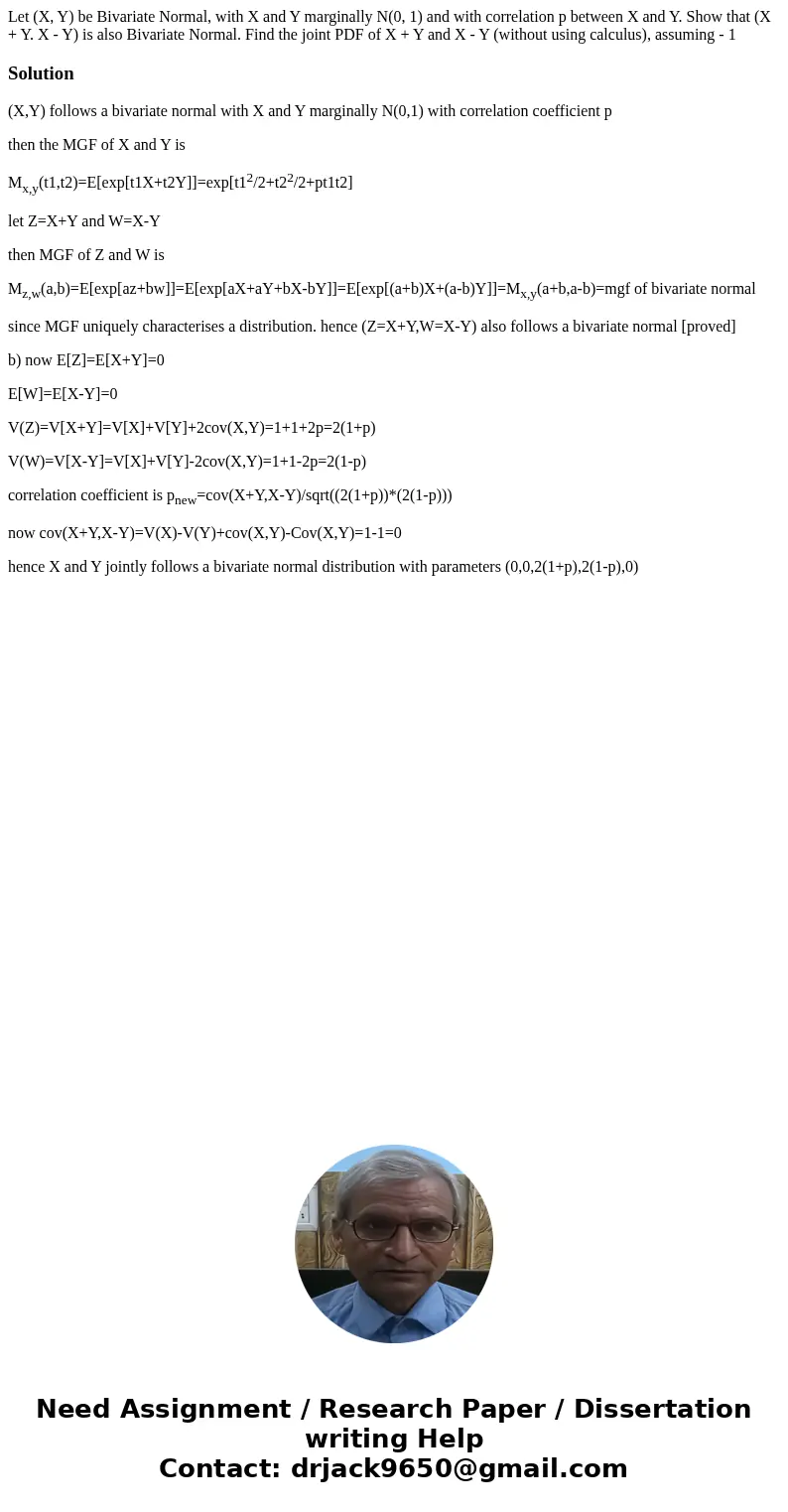Let X Y be Bivariate Normal with X and Y marginally N0 1 and
Solution
(X,Y) follows a bivariate normal with X and Y marginally N(0,1) with correlation coefficient p
then the MGF of X and Y is
Mx,y(t1,t2)=E[exp[t1X+t2Y]]=exp[t12/2+t22/2+pt1t2]
let Z=X+Y and W=X-Y
then MGF of Z and W is
Mz,w(a,b)=E[exp[az+bw]]=E[exp[aX+aY+bX-bY]]=E[exp[(a+b)X+(a-b)Y]]=Mx,y(a+b,a-b)=mgf of bivariate normal
since MGF uniquely characterises a distribution. hence (Z=X+Y,W=X-Y) also follows a bivariate normal [proved]
b) now E[Z]=E[X+Y]=0
E[W]=E[X-Y]=0
V(Z)=V[X+Y]=V[X]+V[Y]+2cov(X,Y)=1+1+2p=2(1+p)
V(W)=V[X-Y]=V[X]+V[Y]-2cov(X,Y)=1+1-2p=2(1-p)
correlation coefficient is pnew=cov(X+Y,X-Y)/sqrt((2(1+p))*(2(1-p)))
now cov(X+Y,X-Y)=V(X)-V(Y)+cov(X,Y)-Cov(X,Y)=1-1=0
hence X and Y jointly follows a bivariate normal distribution with parameters (0,0,2(1+p),2(1-p),0)

 Homework Sourse
Homework Sourse